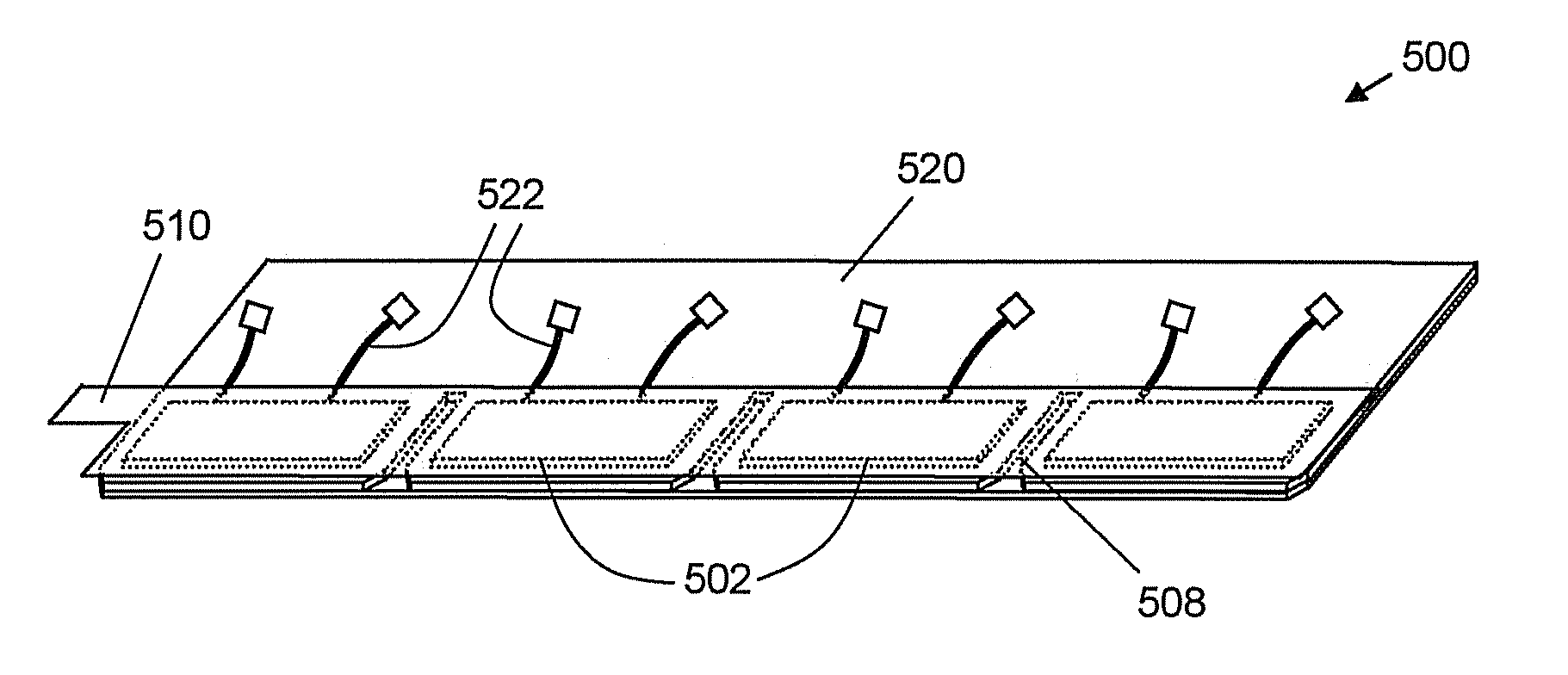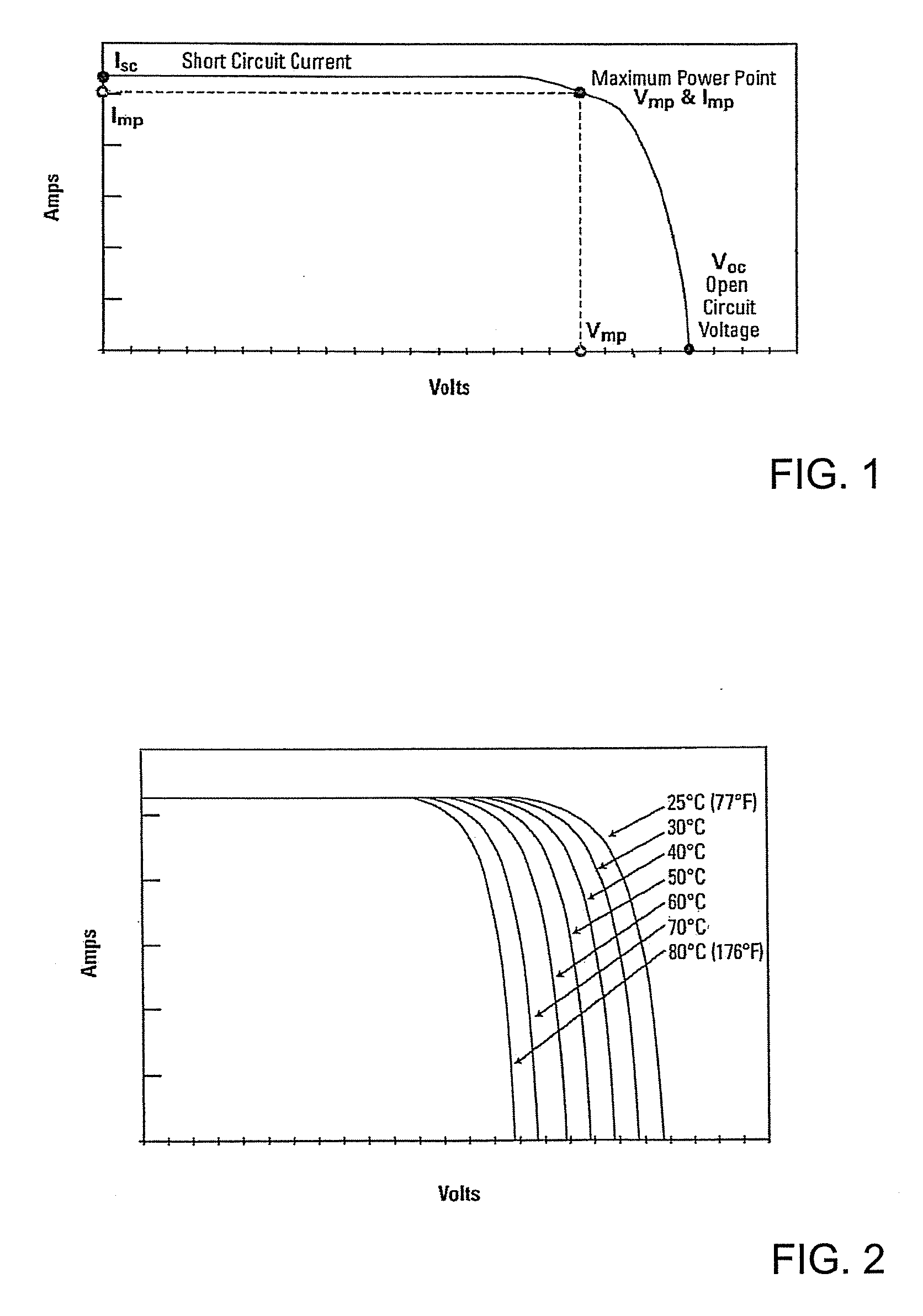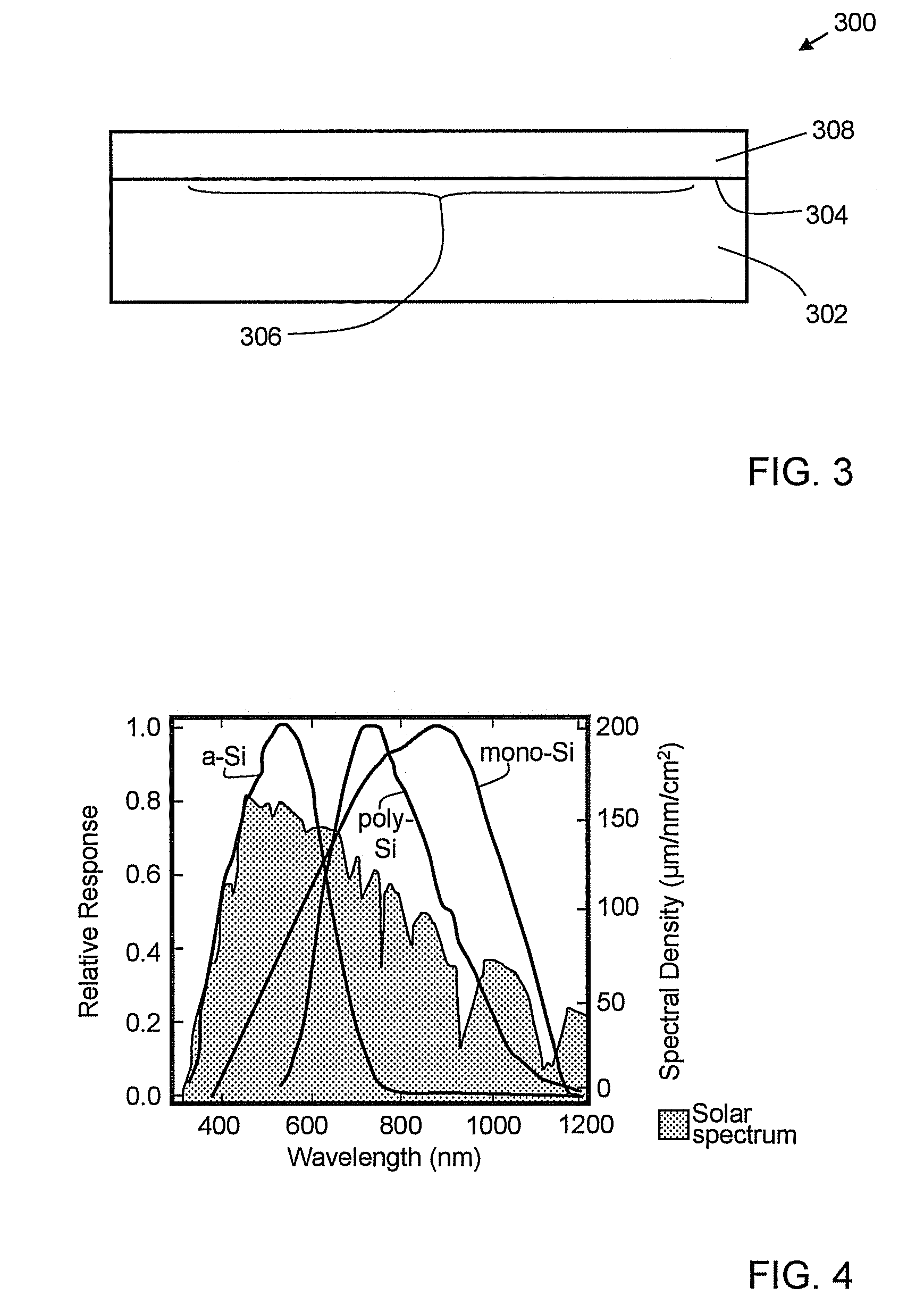Photovoltaic Devices Including Cover Elements, and Photovoltaic Systems, Arrays, Roofs and Methods Using Them
- Summary
- Abstract
- Description
- Claims
- Application Information
AI Technical Summary
Benefits of technology
Problems solved by technology
Method used
Image
Examples
Embodiment Construction
[0036]The voltage and, hence, power output of a photovoltaic cell depends strongly on the intensity of the radiation to which it is exposed. Accordingly, as illumination conditions fluctuate with cloud cover, season, time of day and the appearance or disappearance of shade-providing structures, the power output of the photovoltaic cell will fluctuate. Such fluctuation is often undesirable from the perspective of electrical system design.
[0037]Moreover, as the temperature of a photovoltaic cell increases, its power output drops. The graph of FIG. 1 is an i-V curve for a typical photovoltaic cell, showing the approximate location of the maximum power point. The graph of FIG. 2 shows a series of i-V curves for a typical photovoltaic cell; the skilled artisan will appreciate that as the temperature of the photovoltaic cell increases, the maximum power point shifts to lower voltages. Because the power generated by a photovoltaic cell is the product of its operating voltage and its operat...
PUM
 Login to View More
Login to View More Abstract
Description
Claims
Application Information
 Login to View More
Login to View More - R&D
- Intellectual Property
- Life Sciences
- Materials
- Tech Scout
- Unparalleled Data Quality
- Higher Quality Content
- 60% Fewer Hallucinations
Browse by: Latest US Patents, China's latest patents, Technical Efficacy Thesaurus, Application Domain, Technology Topic, Popular Technical Reports.
© 2025 PatSnap. All rights reserved.Legal|Privacy policy|Modern Slavery Act Transparency Statement|Sitemap|About US| Contact US: help@patsnap.com



